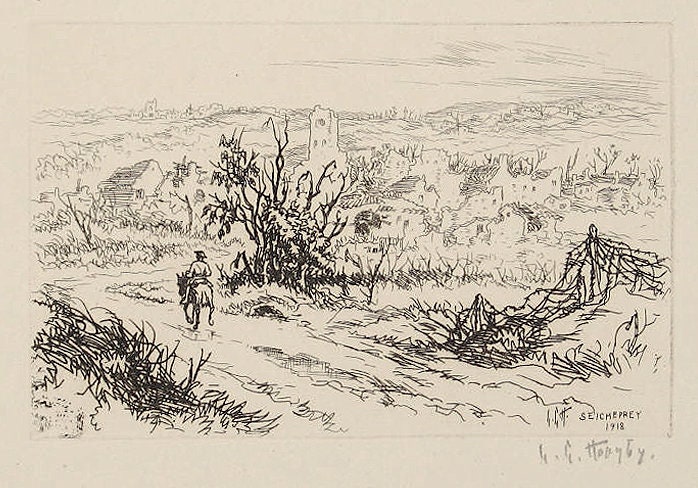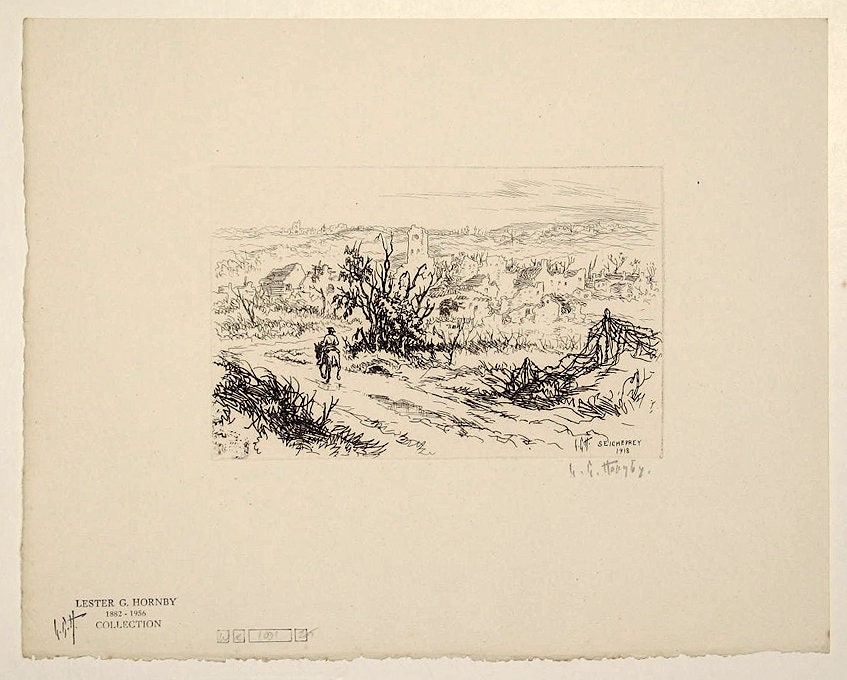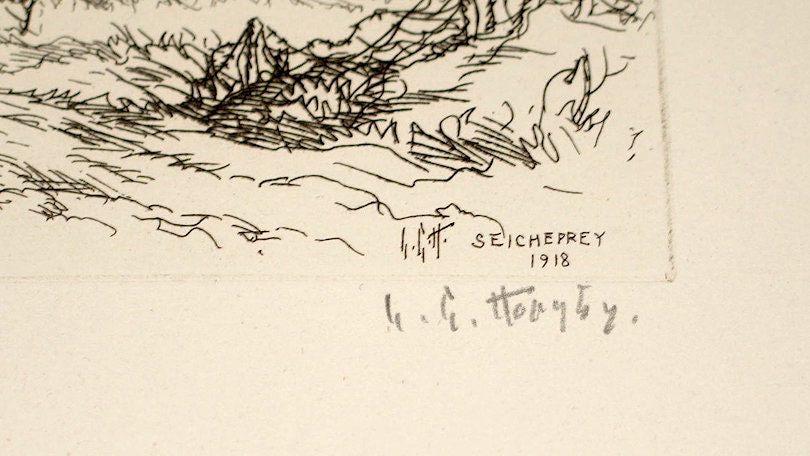


Lester G. Hornby Pencil Signed World War I Etching Seicheprey France 1918 Unmatted, Unframed
$125.00
Seicheprey (France) is an original 1918 pencil signed etching by American artist Lester G. Hornby of the French countryside during World War I. It is signed in pencil by the artist.
Title: Seicheprey (France)
Artist: Lester G. Hornby - (1882-1956) - American artist
Technique: Original Etching
Size: Image - 4-1/2 x 6-7/8 inches
Paper: Arches Cream Laid Paper, 9-5/8 x 12-1/4 inches
Date Published: 1918
Edition Size: From a Limited Edition of 80.
Signed: Signed in pencil by the artist, and signed, dated, and titled in the plate. With a collection stamp in the lower left margin. Reference: "Hornby's Etchings of the Great War" (1921) by Louis Holman - catalogue No. 175.
Condition: Excellent Condition without any flaws. Without age toning, foxing, tears, or creases. A fine example of this World War I print.
Printing: A strong impression printed in black ink on cream laid paper.
Presentation: Unmatted and unframed. Blank on the back, not laid down. Ships in a plastic archival sleeve.
Lester G. Hornby was a highly esteemed American painter and printmaker during the early decades of the 20th century. Like many of his fellow artists he traveled in Europe producing etchings in France and Spain.
In 1918 during World War I, Hornby was assigned to the Commission on Public Information and given permission to wander at will wherever there were American troops. In France, Hornby made drawings in pencil, ink, and brush - many of which were later turned into etchings. These works in their spontaneous record of the reality happening all around him, became a permanent document of the Great War.
The American Expeditionary Forces fought one of its earliest World War I engagements at the tiny hamlet of Seicheprey, located in northeast France on April 20, 1918. It was a surprise battle, at least as far as the Americans were concerned. They weren’t expecting a fight when the Germans struck at them from the north in the early hours of the morning.
More than 650 U.S. soldiers mostly from New England were killed or wounded during the battle.
In Hornby’s image a lone soldier on horseback rides along a deserted road in the destroyed village.
In his catalog of Hornby's war etchings, Louis Holman at Goodspeed's Book Shop offered the following comment about the works:
"This series is, I believe, destined to stand as the greatest pictorial record of America's part in the Great War."
Lester George Hornby was born in Massachusetts and received his early training in fine arts at the Rhode Island School of Design and The Art Students League in New York.
Hornby's graphic output includes about 330 etchings, drypoints, color aquatints, and lithographs, done from 1905 through the 1940's. His technique was often complicated and variable before the desired effect was achieved. He used different sands and powdered resins to obtain various effects in the shadows and lines of his finished product. Also, his wiping techniques or retroussage in printing gave him excellent results in the large areas of light and shadows, which were prominent in so many of his plates.
After the conclusion of World War I, Hornby, became less intrigued with dramatic tones and atmospheric effects and concentrated more on achieving effect through the line itself. During the 1940s he became interested in lithography and produced some strong images.